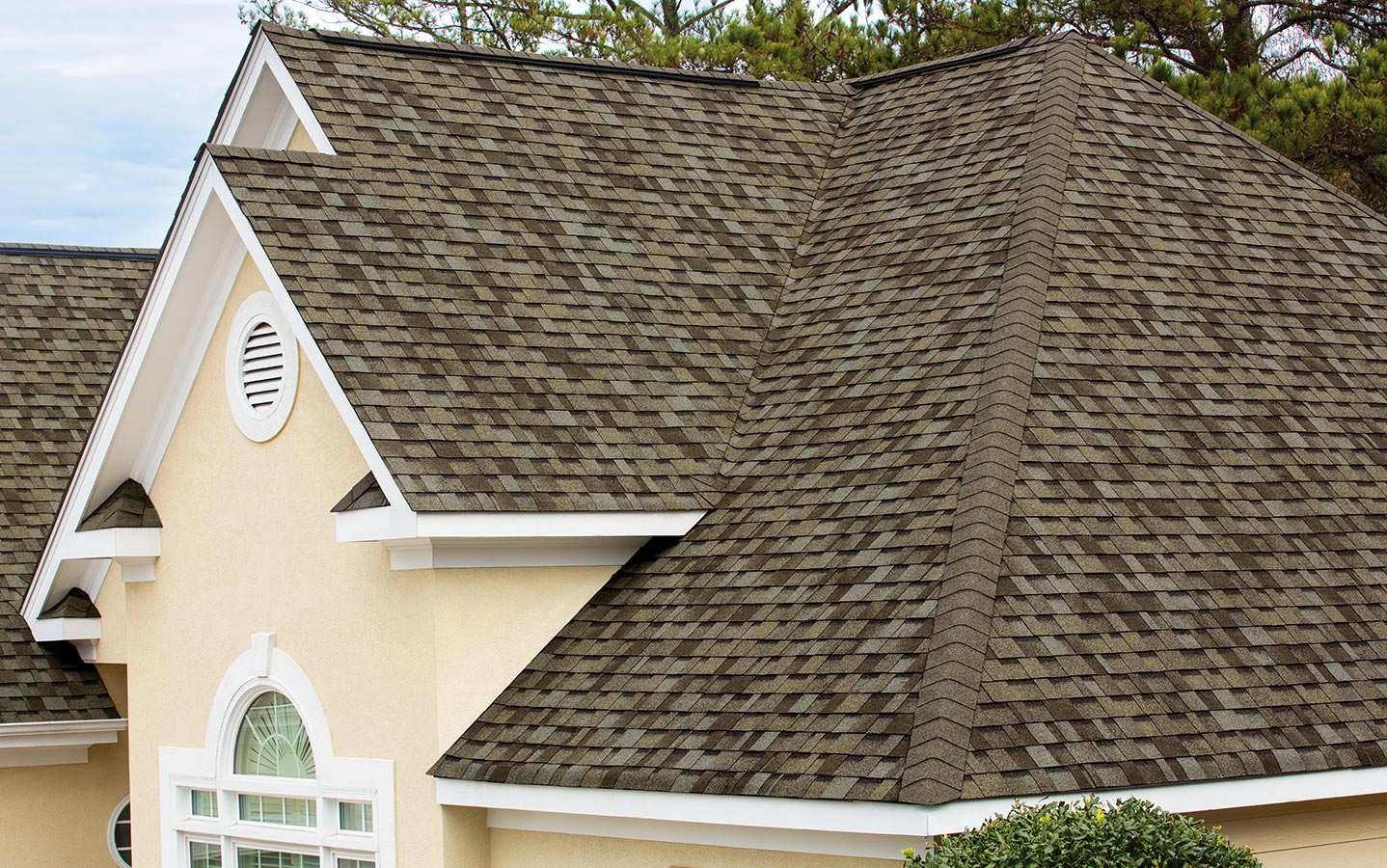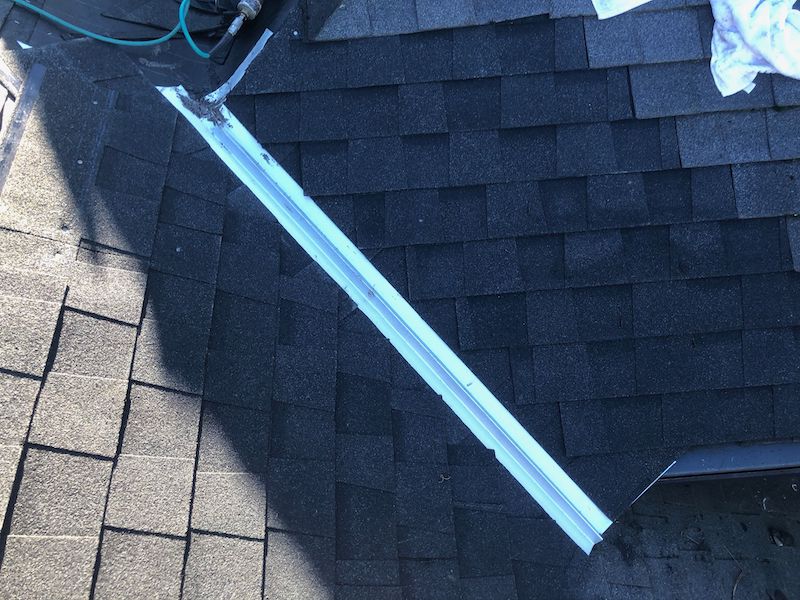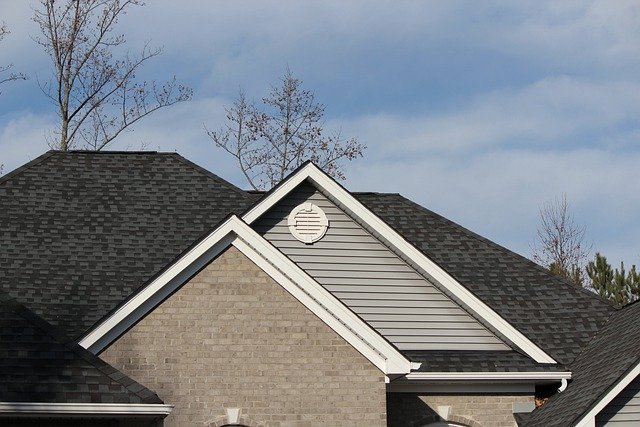A roof valley is a spot where two roof surfaces meet. Even though they are put at somewhat varying angles, the shingles on each roof plane must connect seamlessly to the valley. Roofers and manufacturers have developed several methods for joining the two planes of a roof in the valley.
There is no easier or more difficult component of a roof than the valley. Since the valley collects runoff from both roof levels, it is the primary water collector. Accordingly, the roof valley is the second most probable place for a leak to occur since it receives the highest foot traffic.
Manufacturers’ limited warranties may only apply if you have a specific style of a roof valley. If you want your roof to last as long as possible and stay within the terms of your guarantee, the technique you choose to install the valleys is crucial.
Woven roof valleys, closed roof valleys, and open roof valleys are the three most common forms of roof valleys. The California valley is a specific kind of open metal valley. There are advantages and disadvantages to each kind. We’ll compare and contrast open valley vs closed valley roofs.
What Is a Closed Valley Roof?

To prepare a roof for a shingle roof assembly, a roofing contractor will first put down underlayment over the whole surface. A self-adhering ice and water shield, or another form of underlayment with a thicker gauge than the underlayment that covers the rest of the roof system, may be included in the underlayment. As the valley lining, this self-adhering underlayment does its job well.
Roofing contractors that want to achieve a closed valley will lay asphalt shingles on the roof deck and then extend them to the point where two slopes meet; this will completely cover the valley. In the end, the asphalt shingles will completely cover the self-adhering underlayment, including in the valley.
Asphalt shingles are used for two purposes: first, as a liner for the valley, and second, as a waterproof wear surface.
What Is an Open Valley Roof?

An open valley has more than one layer of lining, making it more complex than a closed valley. Metal valley linings are typically placed after the self-adhering underlayment has been laid over the valley. Valley flashing can be made from any metal that holds up well against the elements, acid rain, and other pollutants. Metallic alloys such as galvanized steel, aluminum, and copper are all viable options.
Asphalt shingles are laid down over the roof deck and then extended into the valley. However, the shingles aren’t laid all the way across the valley, leaving the metal valley’s center uncovered. Furthermore, make sure that the shingles are not nailed through the valley metal.
Then, a line is drawn with chalk from the crest of the valley to its base. After the shingles are removed, the valley’s surface is “opened” to water runoff and the natural environment. When two parallel roof lines meet, an open valley reveals a horizontal band of metal.
When to Choose a Closed Valley over an Open Valley
Contractors and homeowners might select between an open valley and a closed valley for a variety of reasons:
- Contractors, designers, and owners may prefer one style of the valley due to aesthetic considerations. Remember that a closed valley hides the valley line and makes the roof planes look like they belong together. Open valleys, on the other hand, reveal the metal and can be more visually appealing, especially when lined with copper.
- By not installing metal in the valleys, contractors might potentially save money on roofing projects. If the roof system being constructed has several valleys, this will help keep the total cost of installation down.
- The functionality of closed valleys vs. open valleys is a matter of debate among installers and designers. If closed valleys are not built correctly, they might direct water under the shingles that sit atop the base shingles. However, if open valleys are not correctly trimmed, water might pool along the top of the tiles that have been removed from the valley, leading to leaks in the roof.
When it comes time to replace the roofing system on your house or business, you should consider both choices seriously. If you plan on replacing your roof yourself, consider all of these considerations before starting work.
If a professional roofing company has replaced your roof, ask them about the valley detail beforehand. Taking care of the valley detail before construction begins will give you time to think about your options and ensure that you end up with a roof that looks and performs the way you envisioned.
How Does an Open Valley Installation Differ from a Closed One?
Regarding roofing valleys, the two most frequent installation methods are open valleys and closed valleys. The “seam” between two neighboring roof pitches where they meet at an inside corner is called a “roof valley.”
Due to the irregular shape of most houses and building footprints, most steep-slope (non-flat) commercial roofs will also include valleys. Dormer roof valleys also appear at the junction of primary and secondary roof slopes.
Due to the increased water flow at the junction of two slopes and the fact that leaks are frequently found at the seam between two slopes, valleys are an essential component of steep-slope roof systems.
Installing an open valley is preferable since it lasts longer, sheds water more efficiently, and consistently prevents leaks better than any other type of valley. Still widely used, closed valley systems are only permitted as part of a roof if erected following local codes.
Unless you have leaks or granule loss on the shingles in the valley, there is typically no need to move from a closed-valley system if your home already has one. Although closed valley applications had their heyday in the past, they are still employed today, even in new construction and full roof replacements, particularly in situations where the price is the primary concern.
What Are the Distinctive Characteristics of Closed Valley and Open Valley Roofs?
Straight lines produced by the intersection of two roof planes are known as a roof’s valley, and they play a crucial role in the roof’s ability to channel large volumes of water away from the building. When two roof sections on different planes meet, such as at the intersection of a gable dormer and the main roof or at the intersection of an angled wing and the main roof, a valley is formed.
Roof valleys are unavoidable at the points where the two halves of an L-shaped or T-shaped home meet. Water is directed away from the roof’s edge and down the valley by the roof’s opposing surfaces.
How much more do open valleys cost than closed ones to install on a roof?
| Type | Average cost (range $300 – $1,000) |
| Closed valley (asphalt shingles) | $200 – $600 |
| Open valley (metal flashing) | $200 – $850 |
As construction material prices fluctuate often, the main difference in price between installing open and closed valleys is the price of the metal itself, which must be bent to form by a custom metal fabricator, particularly for the work.
Some homes don’t have any valleys at all, while others have incredibly complicated roofs; thus, the number and length of valleys on your roof significantly influence the price differential.
Our most recent project cost sheets for single-family homes with valleys show an average expenditure of between $200 and $1,100.
Shingle Roof Valley Types

Closed-Cut Roof Valley
In a closed-cut roof valley, the shingles are cut in a straight line along the valley’s approximate center. A competent roofer will install the shingles in this pattern by starting with one roof plane. A dozen or so inches past the valley’s apex is where they give up.
The shingles are then laid in a second plane, where they might overlap the first. The second layer of shingles was then cut in a straight line two inches out from the valley’s center. Using this technique, the top layer of shingles overlaps the bottom layer by a few inches.
With shingles, a valley that is cut off at the top is not the most practical design feature. It’s possible that the thickness of laminated shingles prevents them from bending correctly into the valley and from sitting neatly beneath the second layer of shingles. A roofer will also need more time to make a clean cut through the laminate shingle layers.
California Roof Valley
When it comes to open metal roof valleys, a California valley is a subset. Roofers may refer to a particular form of the closed-cut valley as a “California valley,” but it is not the type we are talking about today. Flashing made of metal runs along the middle of the California roof valley. Because this procedure does not need cutting the shingles, it should help roofers save even more time.
Expert roofers will install metal flashing in an open metal California roof valley. Still, they will lay the shingles next to the flashing on their side, along a perpendicular line to the valley’s center line. A shingle’s hued side always points toward the valley’s geographic heart.
As the shingles are not trimmed to size for the valley, this installation method is quicker overall. Installing a California roof valley is a job for seasoned roofers only.
If your roof has a slope of 6:12 or higher, the California roof valley will work fine for you. Water is less likely to run over the side of a roof with a steep pitch. On flat roofs, water can flow laterally and pool under the shingles if the slope is too shallow. The limited warranty may be nullified if you install a California-style valley. Also, local construction regulations can be affected.
Open Roof Valley (With Metal Lining)
Without having to mesh together tiles from two roof planes, you won’t have to worry about that with an open metal valley. Instead, skilled roofers use metal flashing, preferably galvanized or coated steel, to seal the valley. After the flashing is in place, the shingles are applied, and then the shingles are trimmed back on both sides so that some of the metal shows through.
The open design of metal roof valleys improves functionality, particularly in snow removal and preventing debris accumulation. Additionally, they are more effective since they need fewer nails in the valley. However, roofers should avoid nailing directly into the valley and instead only nail around the flashing’s outside borders.
Because they separate the different planes of the roof, exposed metal valleys are also a popular choice among homeowners. Open metal troughs really make dimensional shingles stand out on a roof.
However, the cost to build an open metal valley could be more than for a closed one. Your roofing contractor will need to select flashing, make any necessary purchases, and transport it to the project site. Laying chalk lines, cutting flashing, securing flashing, and cutting numerous shingles are all necessary steps in the installation process.
Which Type of Roof Valley is recommended?
It’s possible that open metal valleys will outlast closed ones, despite the fact that closed valleys are still more common.
Closed valleys’ streamlined design and quick installation time have made them a favorite among construction professionals. When compared to an open metal valley, they don’t have the same installation requirements or amount of processes.
We can fix your roof if it has been damaged by wind, sunlight, or normal wear and tear. ROOF DOCTORS are professionals who fix roofs. We provide full roof replacement services, giving you a choice of materials and colors if your roof is beyond repair. Always feel free to call us at (800) 913-1180 if you have any questions or need our assistance.
FAQs
How long do roof valleys typically last?
In twenty years, a roof valley will have completely worn off. It depends greatly on factors such as the type of materials used, the skill of the installers, the house’s location, the climate, and so on.
Why do leaks always seem to happen in roof valleys?
Typically, faulty or nonexistent flashing in the valley region is to blame for the leak. Incompetent roofers and general contractors are frequently at blame for such shoddy work. Having a skilled roofer fix any potential leaks is the best method to prevent leaks from occurring in the first place.


